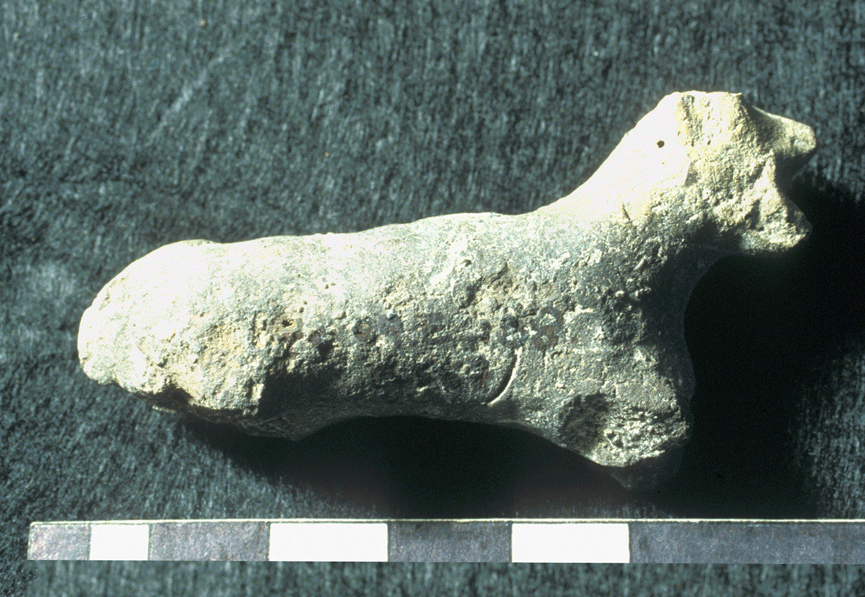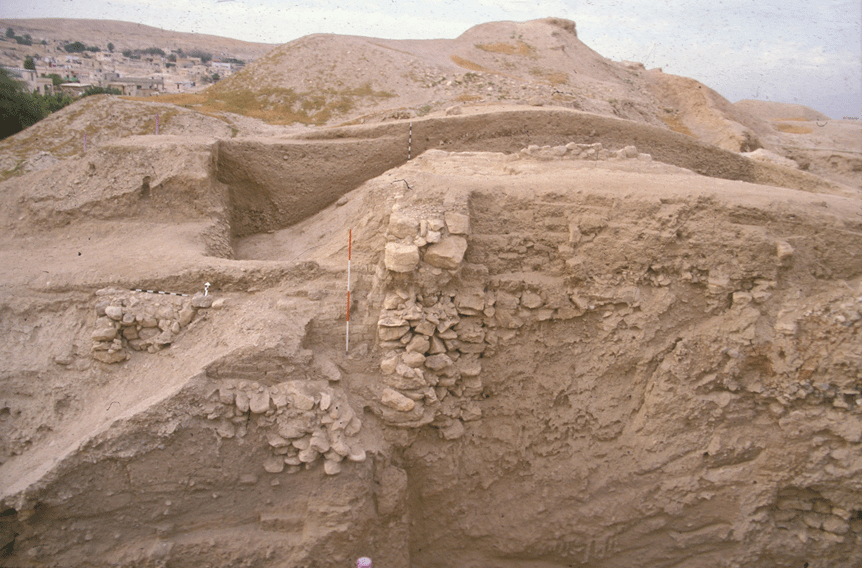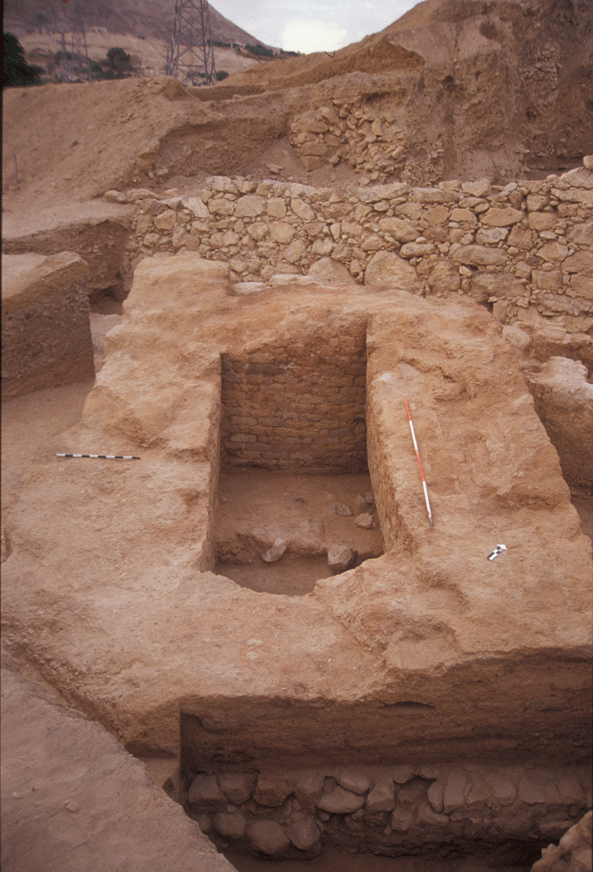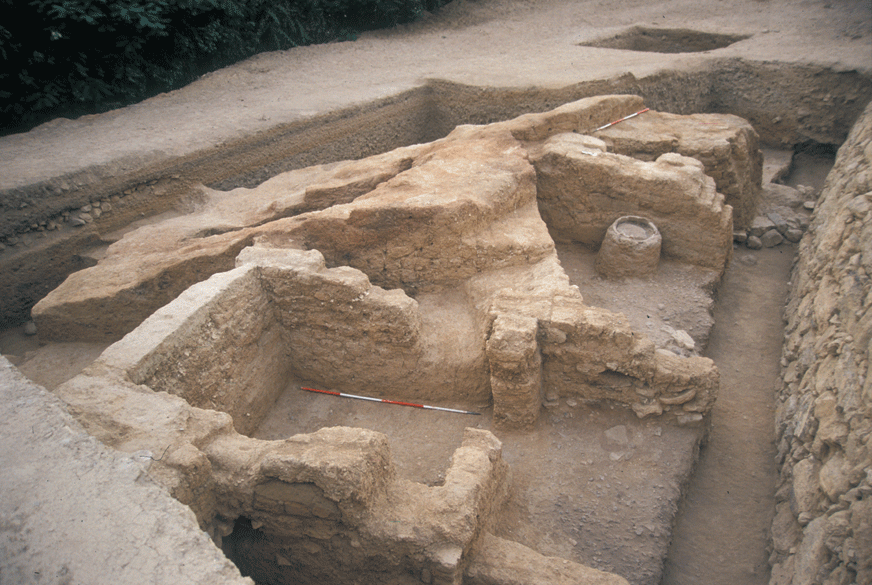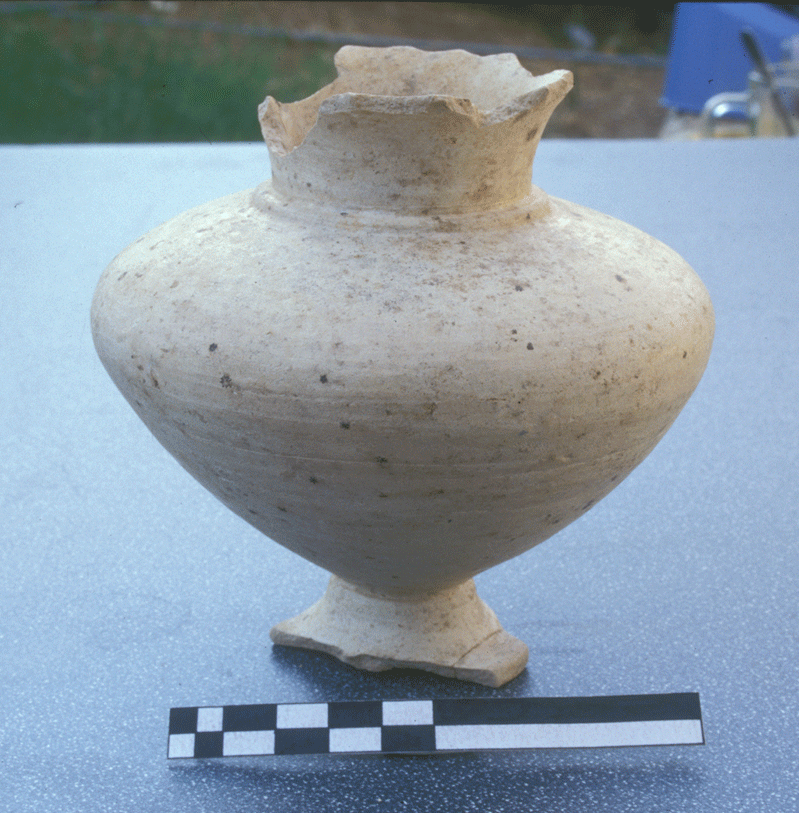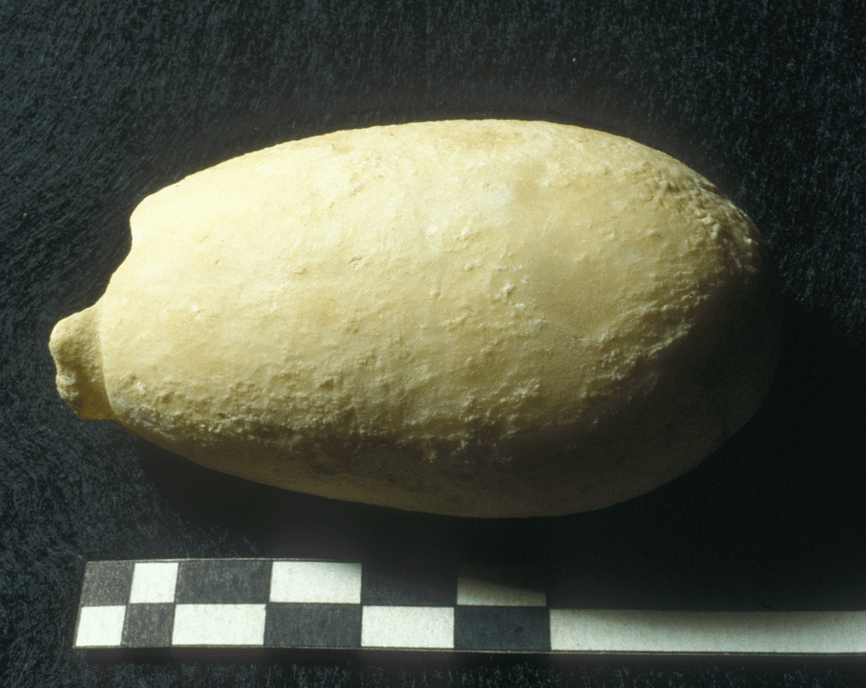7. Sultan IVb - Middle Bronze II (1800-1650 BC)
After a major destruction, occurred towards the end of Sultan IVa (Sesostris III�s campaign?), the city of Jericho was again rebuilt and a new fortification system was erected all around the tell, consisting of a rampart made up by a massive stone wall at its outer bottom (partly reusing, partly reconstructing the previous mud-brick city-wall)[52], supporting a series of earthen fillings with a crushed limestone or clay revetment, and of an upper wall with subsidiary buildings over it.
A long stretch of the stone wall at the base of the rampart has been brought to light in Area E, at the south-western corner of the site. At the middle of this wall a rectangular structure protrudes out of the line of the city fortification, possibly the foundation of a defensive tower. Inside the Tower, in a layer of destruction apparently belonging to MB II, a clay figurine of a lioness was found[53].
The upper part of the rampart was examined during the first two seasons in Area C, at Kenyon�s Trench I, where a series of supporting walls were identified just below its top[54]. At different sites around the tell the rampart was made with different techniques, so that it is yet complicated to identify the exact phase of utilization of each stretch.
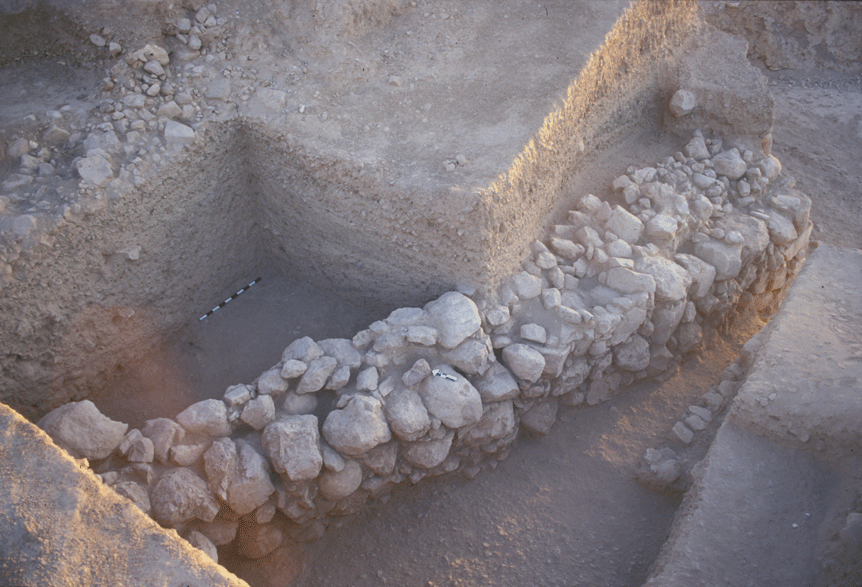
.gif)
